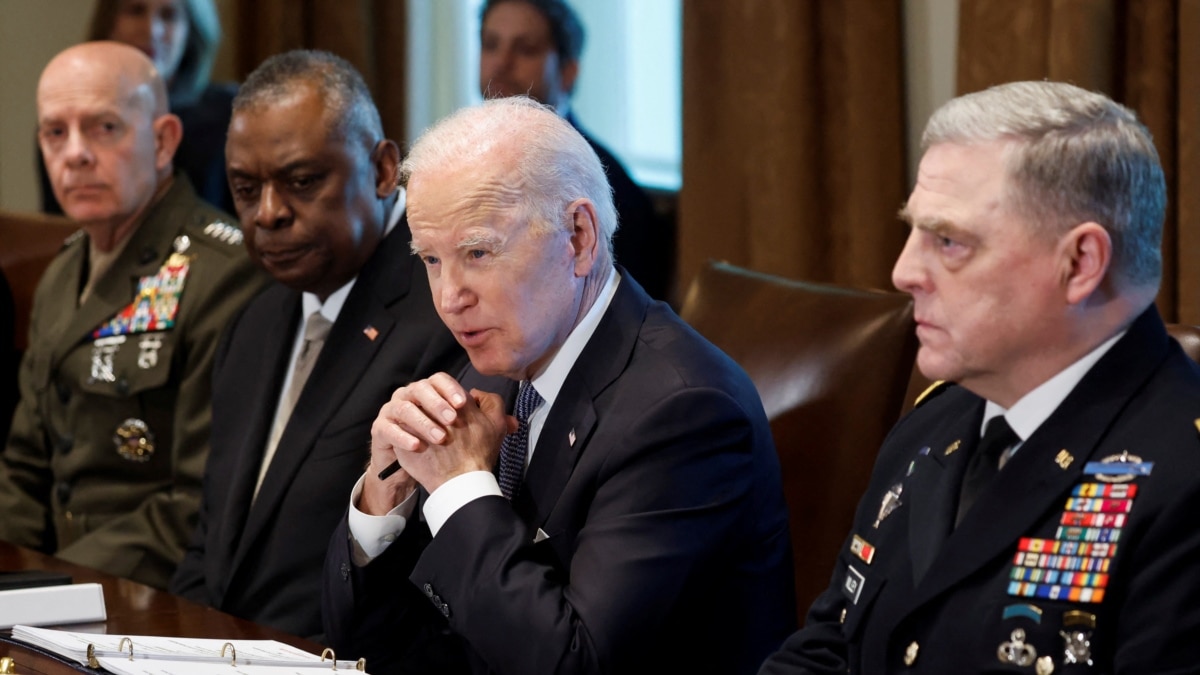
US President Joe Biden will talk about Russia’s invasion of Ukraine on Thursday, and his administration is preparing another round of about $ 800 million in security assistance, including US aid to Kiev.
The United States announced a similar contingent last week, and the new aid is expected to include more artillery, which could be key to fighting in the eastern Donbass.
Earlier in the week, Biden confirmed to reporters that he was sending more artillery to Ukraine.
“Of the $ 3.5 billion provided by Congress this fiscal year, we have spent more than $ 2.4 billion to provide Ukraine with military equipment and the capabilities needed to defend themselves,” a senior executive said. The Voice of America.
“We are constantly looking for additional security assistance that we can provide to Ukraine, and we have additional officers who can return if needed,” he added.
$ 3.5 billion is part of Ukraine’s $ 13.6 billion subdivision law. It was passed by Congress in March.
Presidential consultation with military leaders
When Russia launched new attacks on Wednesday against the besieged Ukrainian port city of Mariupol, Biden summoned his military leadership for a recent assessment of the Russian invasion.
“I would like to hear from all of you your assessments of what you see on the field and across our forces,” Biden said before their meeting with the military brass at the White House. “The strategic environment around the world is evolving rapidly, but it means that our plans and power positions must be equally dynamic.”
Biden met with Defense Secretary Lloyd Austin, Joint Chiefs of Staff General Mark Millie and about twenty military leaders and national security advisers.
Earlier on Wednesday, the United States imposed new sanctions on dozens of individuals and companies accused of evading sanctions on Moscow over its invasion of Ukraine.
“The Treasury Department has approved Transkapitalbank, a leading Russian commercial bank that has provided services to banks worldwide to avoid international sanctions, and more than 40 individuals and entities that are part of the Russian embargo network led by the Russian oligarch Konstantin Malofiev.” House Press Secretary Jen Zaki told reporters.
Psaki said Washington had also imposed sanctions on companies in Russia’s mining sector and imposed visa restrictions on more than 600 people in response to human rights abuses in Russia and Belarus.
Said Michael O’Honlen, senior colleague and director of foreign policy research at Brookings. VOA In addition to military aid and sanctions, Washington must begin to think about the credible end of the conflict.
“Then, think about what can be done to encourage the parties, with other outsiders, even the Chinese, to try to move to a place where we can all live, which will last for months or so. Many years of conflict,” O’Honlen said. “But in the short term, we will try to help the Ukrainians avoid losing the war.”
Putin’s twist on Mariupol
Russian President Vladimir Putin on Thursday ordered his forces not to attack the iron plant in the Ukrainian city of Mariupol, where Ukrainian forces have finally taken refuge.
Putin told a televised meeting with his defense minister, Sergei Shoigu, that Russian forces should besiege the plant, saying “a fly cannot pass through it” and that advancing with a plan to attack the base would unnecessarily endanger Russian troops.
Shoiku told Putin that there were 2,000 Ukrainian soldiers at the Azovstel plant, but the rest had been “liberated” in the main port city of Mariupol.
The fate of civilians in the besieged city has raised concerns from the international community, with Ukrainian Deputy Prime Minister Irina Vareshuk saying on Thursday that four buses were able to evacuate people through the humanitarian corridor.
More than 100,000 Ukrainians are believed to be trapped in Mariupol, where 400,000 people lived before Russia invaded the country on February 24.
At a meeting in Panama on Wednesday, US Secretary of State Anthony Blingen said, “The situation there is dire.” He stressed that efforts by humanitarian corridors to allow Mariupol residents to escape had “fallen too quickly”.
The struggle for Mariupol is part of Russia’s widespread offensive in the Donbass region, where Moscow is increasing its military presence.
“Moscow’s current goal is to expand its control in the east and south. They want to control Kharkiv and Odessa,” he said. VOA John e. Herbst is a senior director of the Atlantic Council’s Eurasia Center and a former US ambassador to Ukraine. “But those are strict orders. They may have to settle for Mariupol.”
On March 25, following the losses in northern Ukraine, Moscow announced a major shift in strategy and withdrew troops from the north, including the suburbs of the capital, in order to consolidate forces in the Donbass and build a bridge to the Crimea.
Analysts say that if Russian forces gain full control of Donbass, its diplomats will have a stronger hand in peace talks and be in a better position to demand autonomy for the region.
[Anita Powell y Steve Redisch de VOA contribuyeron a este informe. Contiene información de The Associated Press y Reuters]
Join the Voice of America! Subscribe to our channel Web light And run notifications or follow us on social media: Facebook, Twitter And Instagram.

. “Professional creator. Subtly charming web advocate. Unapologetic problem solver. Devoted student.”





More Stories
Criminal gang in Mykonos encouraged women into prostitution – how they set up romantic dates
Earthquake in Kavtos: “Too early to decide if it’s significant” – Valleys closed, risk of landslides
Halkidiki – Luna Park: SKAI Revelation – Discovered by the Expert